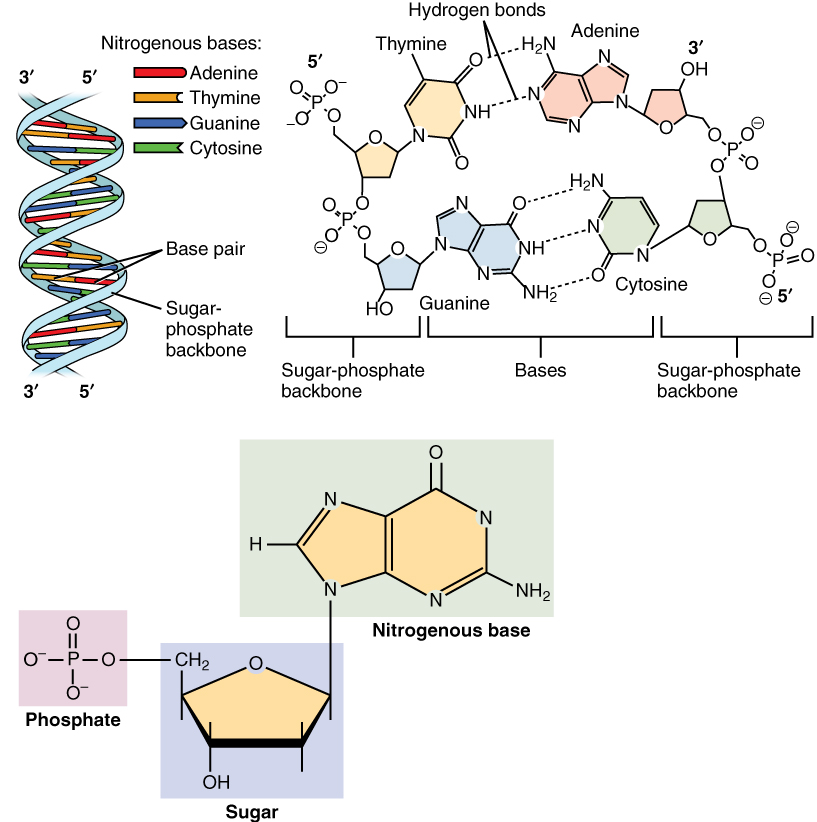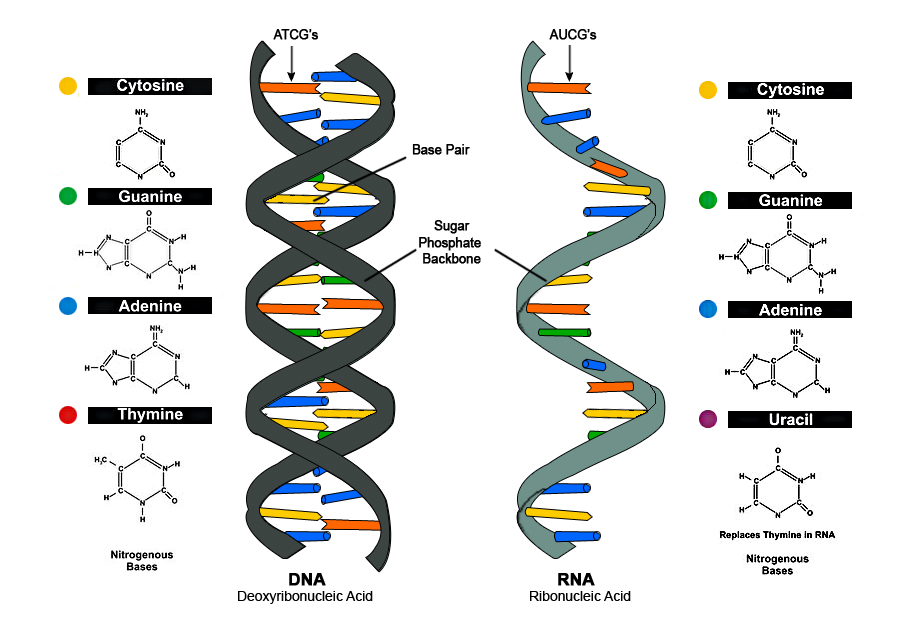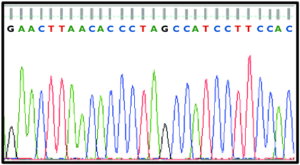Nucleic Acids
Nucleic acids are biological molecules that play essential roles in the storage, transmission, and expression of genetic information. The two primary types of nucleic acids are deoxyribonucleic acid (DNA) and ribonucleic acid (RNA). These molecules are composed of long chains of nucleotides, which serve as the fundamental building blocks.
Each nucleotide comprises three components:
- A Phosphate Group
- A Five-Carbon Sugar – Deoxyribose in DNA and ribose in RNA
- A Nitrogenous Base – Adenine (A), Thymine (T), Cytosine (C), Guanine (G) in DNA, and Uracil (U) replacing Thymine in RNA
The Structure of DNA
DNA has a double-helix structure, consisting of two intertwined strands that are held together by hydrogen bonds between complementary nitrogenous bases. The bases pair specifically:
- Adenine (A) pairs with Thymine (T)
- Cytosine (C) pairs with Guanine (G)
The structure of DNA allows for accurate replication, as each strand serves as a template for the formation of a complementary strand.

The Structure of RNA
RNA is typically single-stranded but can form complex three-dimensional structures through base pairing within the same strand. The nitrogenous bases in RNA are similar to those in DNA, except that RNA contains Uracil (U) instead of Thymine (T). RNA serves multiple functions, including:
- Messenger RNA (mRNA): Carries genetic information from DNA to the ribosome for protein synthesis.
- Transfer RNA (tRNA): Helps decode mRNA into proteins.
- Ribosomal RNA (rRNA): Forms the core structural and functional components of the ribosome.
The universal presence of nucleic acids in all known life forms suggests a common origin of life. This is further supported by the following: (1) Genetic Code: the genetic code, which specifies how nucleotides are translated into amino acids, is nearly universal across all organisms. This points to a shared evolutionary heritage, (2) Homology: The structural and functional similarity between the nucleic acids of different organisms indicates a common ancestry. Homologous genes, which are genes inherited from a common ancestor, often perform similar functions across species and (3) Phylogenetic Evidence: Molecular phylogenetics, which uses genetic data to reconstruct evolutionary relationships, consistently reveals a tree of life that supports a common origin.

The primary structure of DNA refers to the specific sequence of nucleotides. These nucleotides are linked together through covalent bonds, forming a long chain known as a DNA strand. The order of these nucleotides is crucial because it determines the genetic information carried by the DNA. DNA Sequencing is the process of determining the precise order of nucleotides in a DNA molecule. It provides the primary structure of DNA, which is fundamental for various applications in molecular ecology. From a molecular ecology perspective, this is crucial for understanding the genetic basis of ecological and evolutionary processes. DNA sequencing technologies enable researchers to decode this information, providing insights into species identification, genetic diversity, evolutionary relationships, and adaptation, all of which are key areas of interest in molecular ecology.

Media Attributions
- 0322_DNA_Nucleotides © OpenStax is licensed under a CC BY (Attribution) license
- dnavsrna © Zappys Technology Solutions is licensed under a CC BY (Attribution) license
- sequencing

